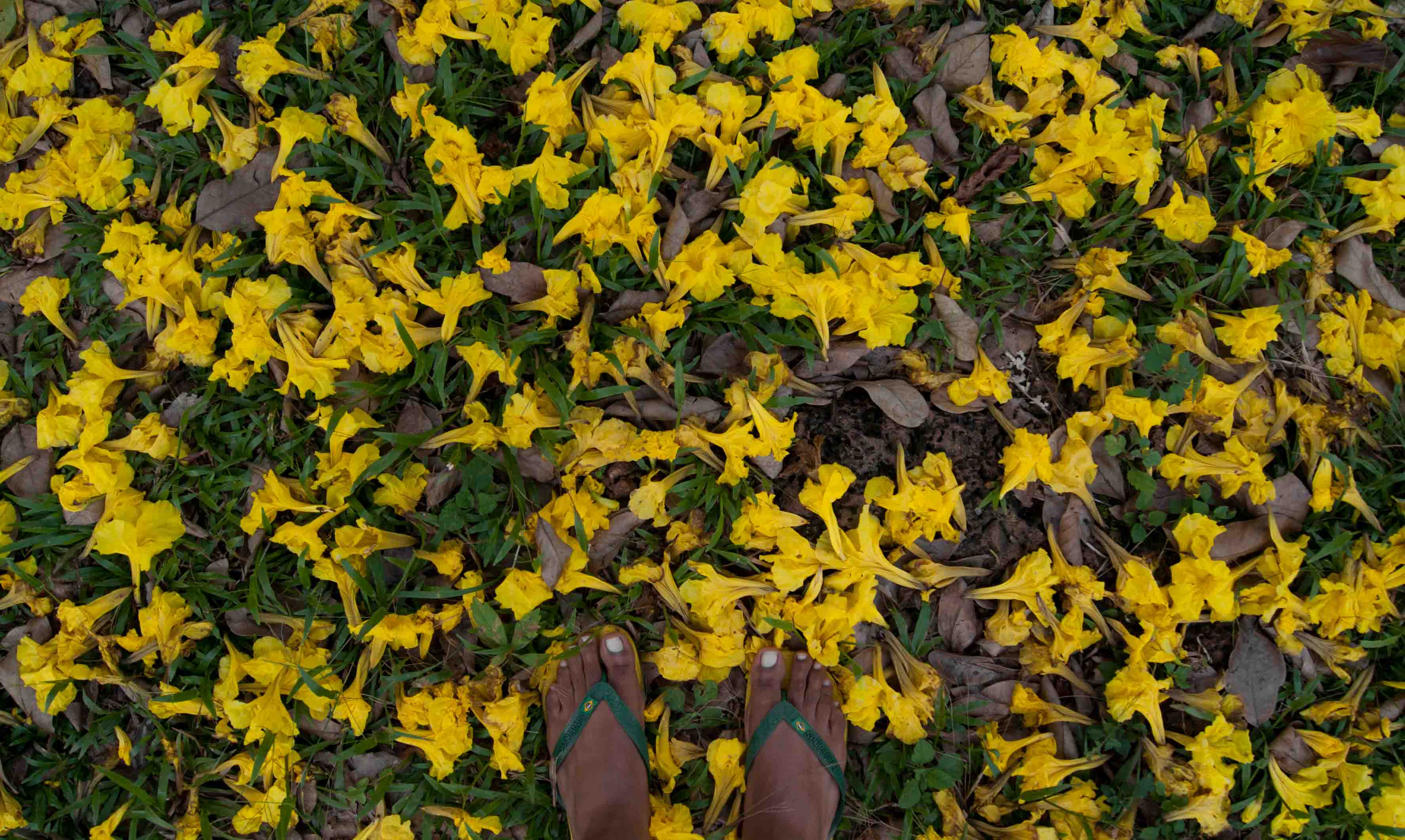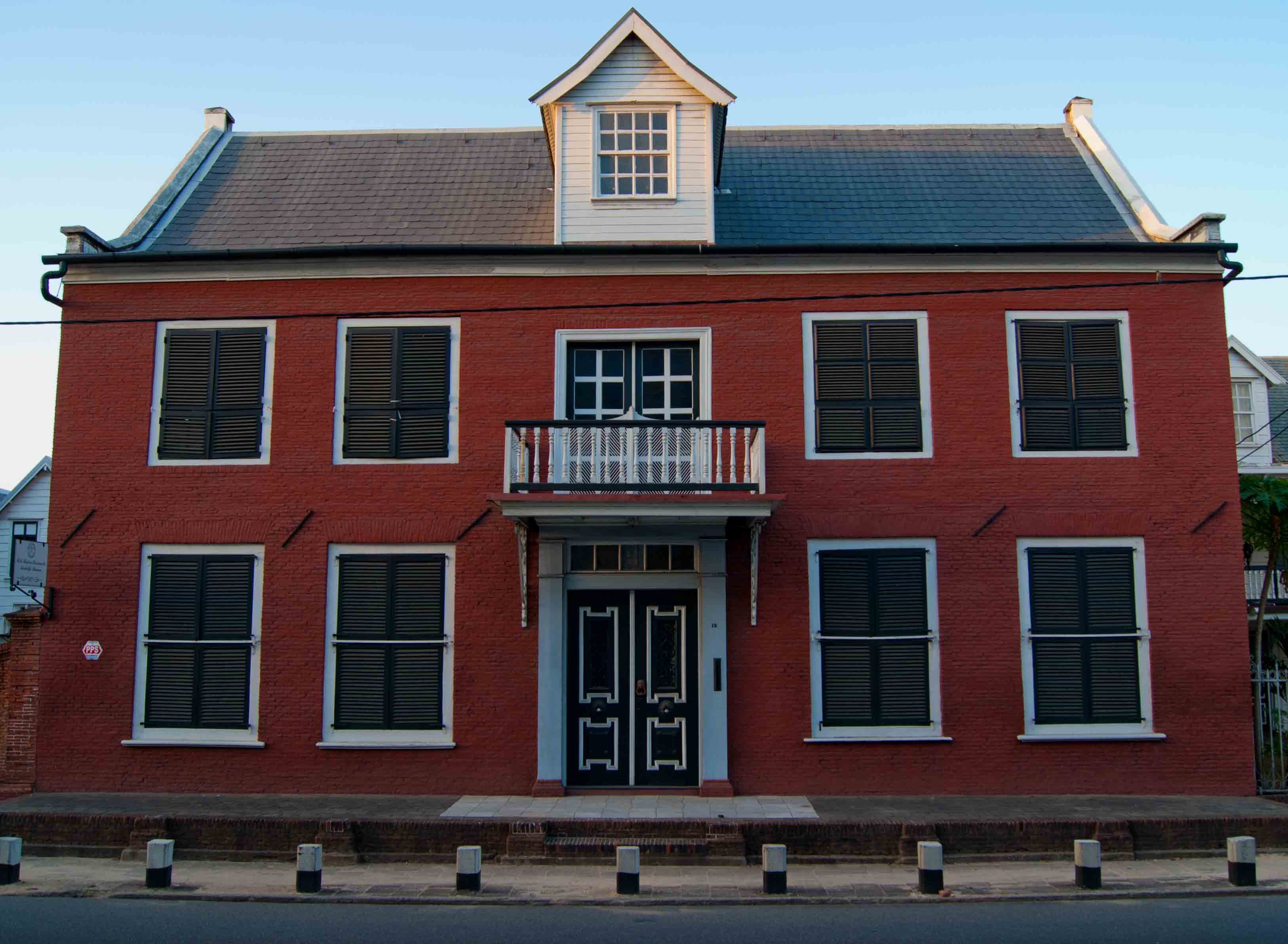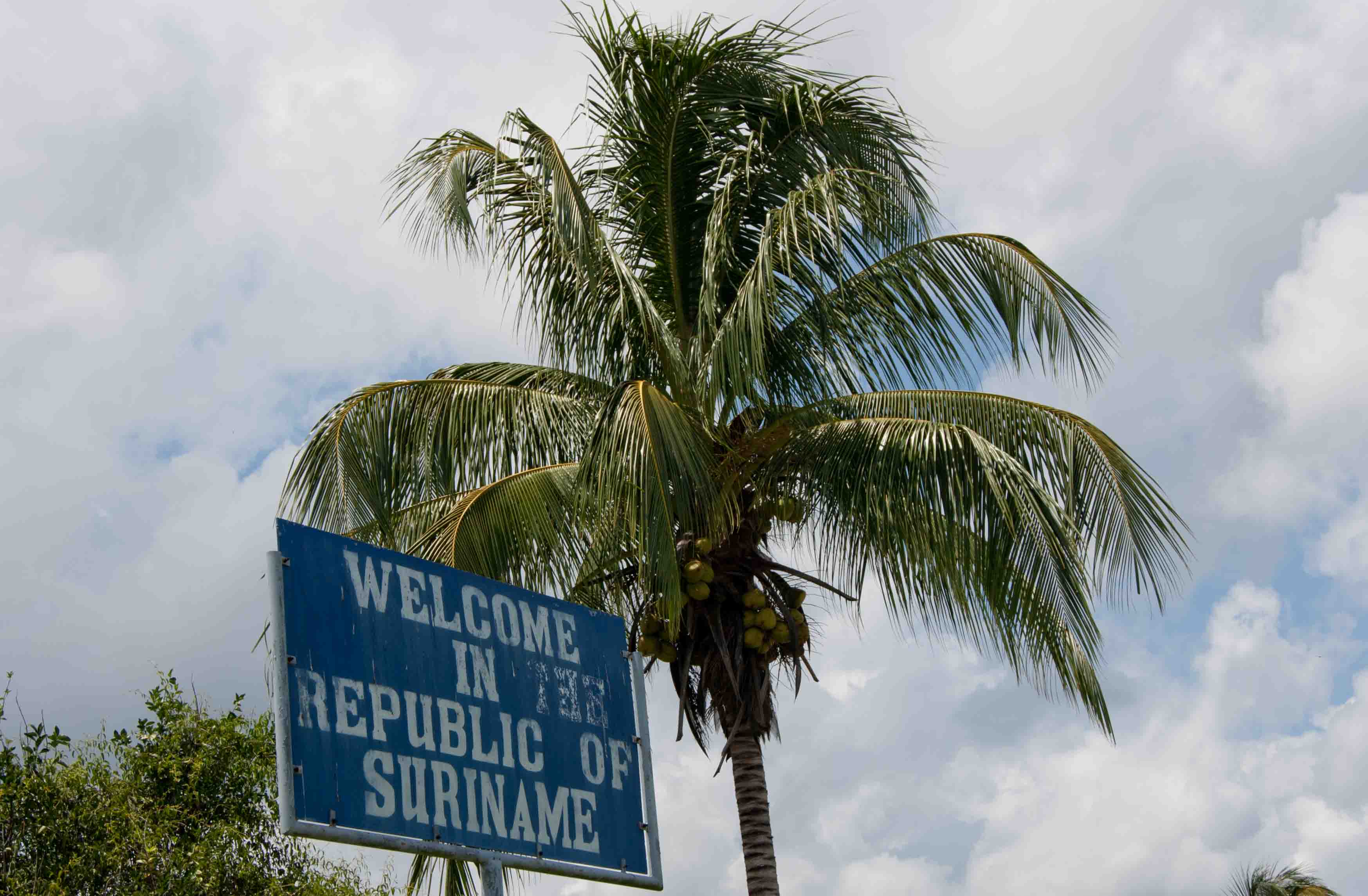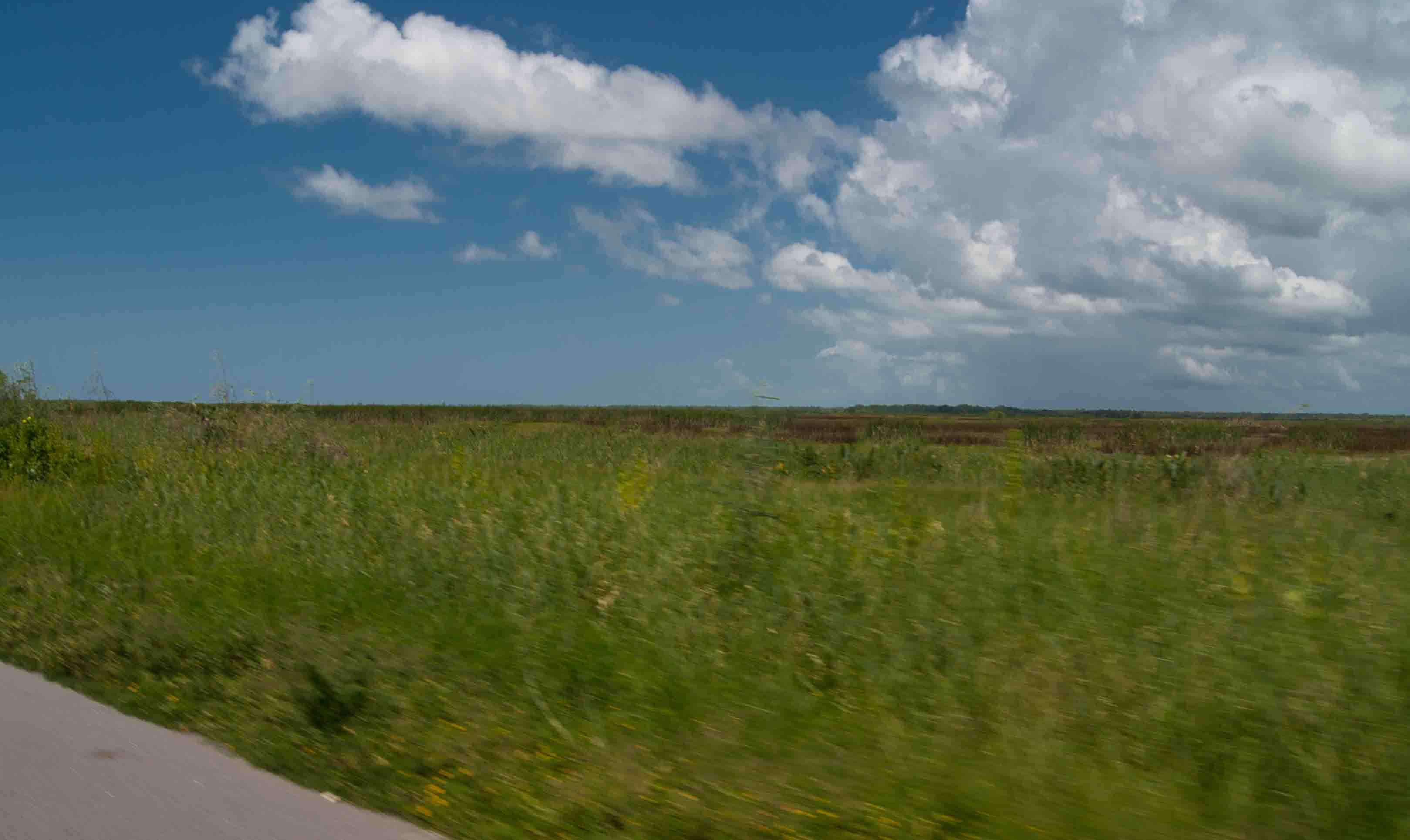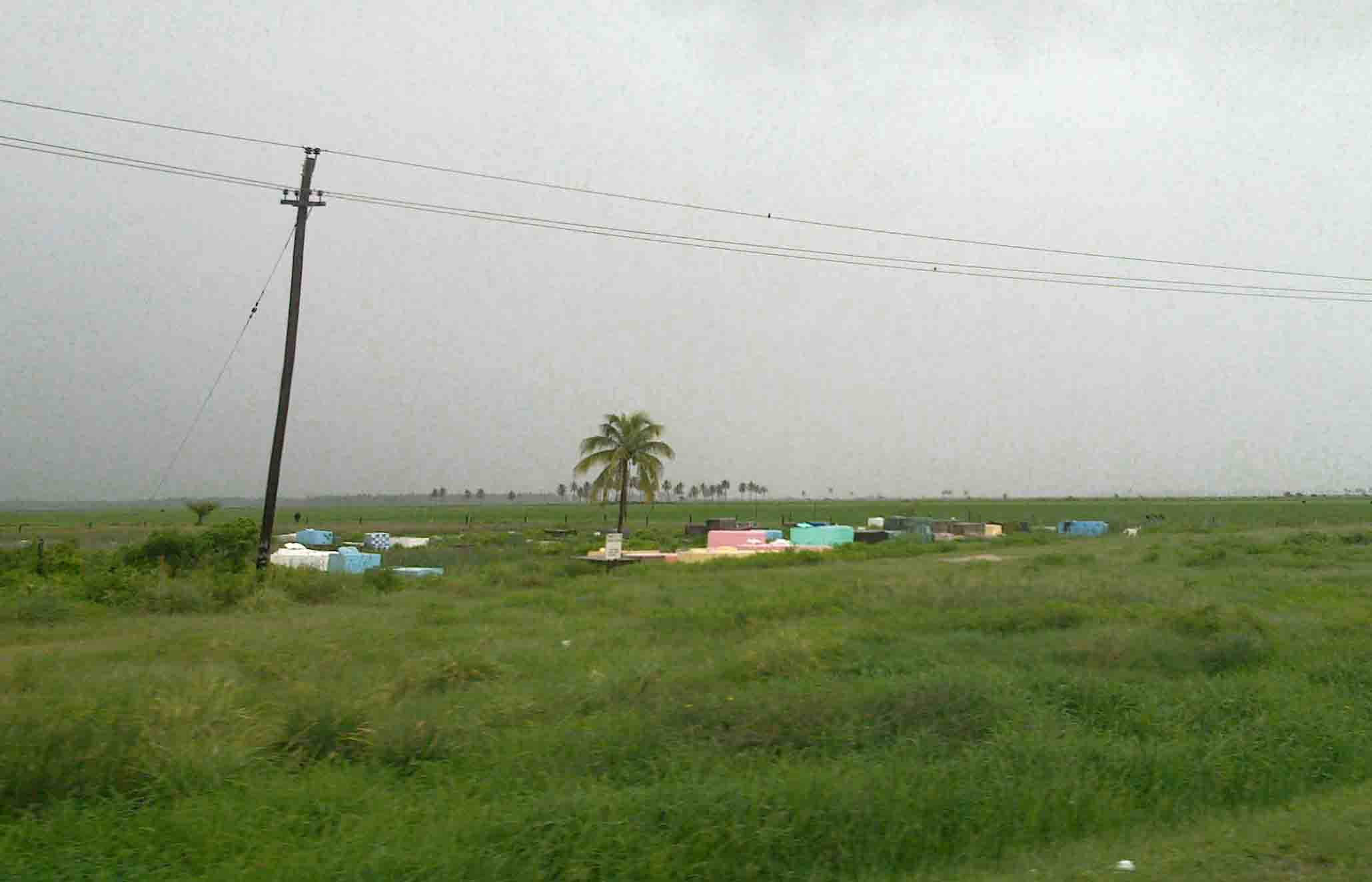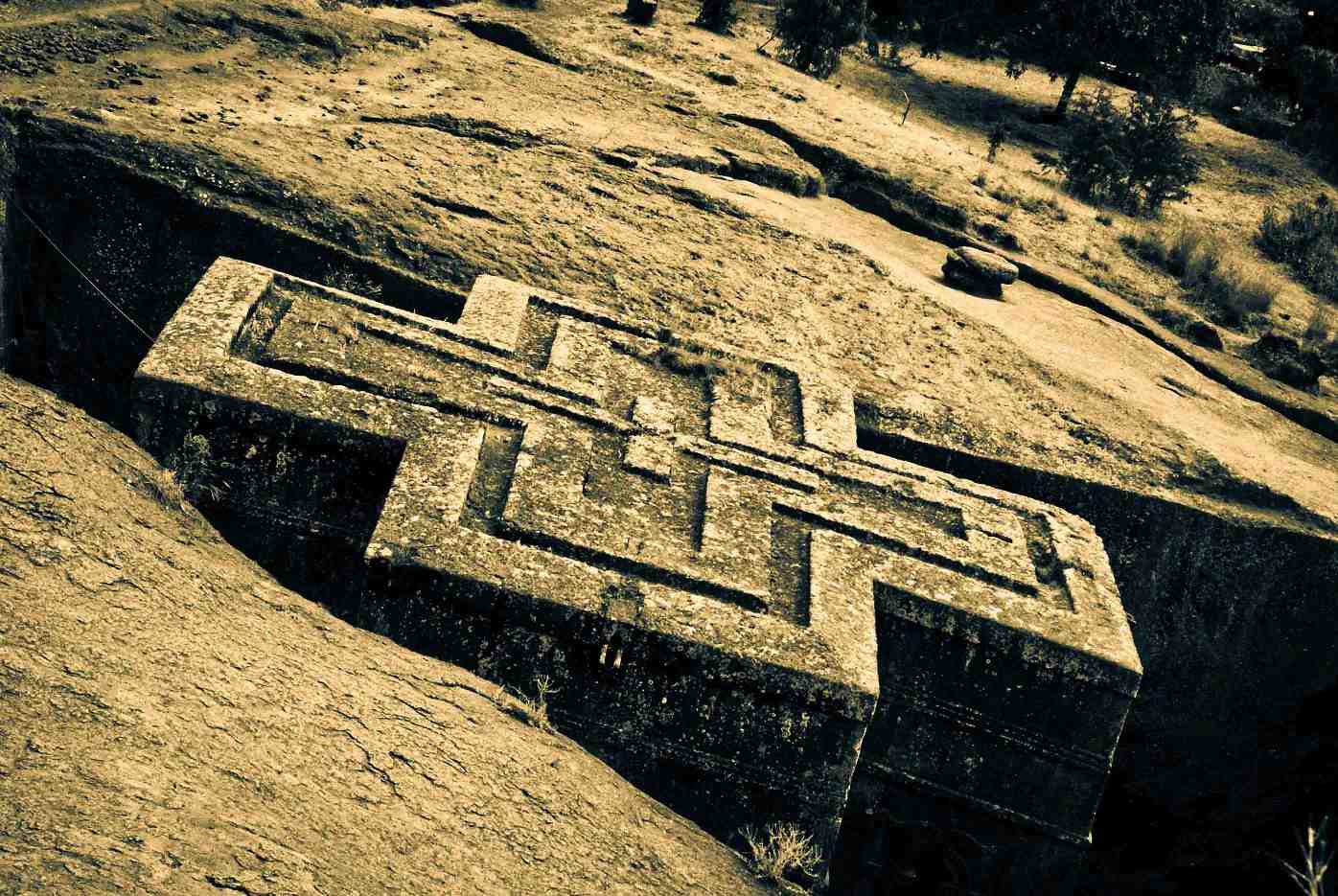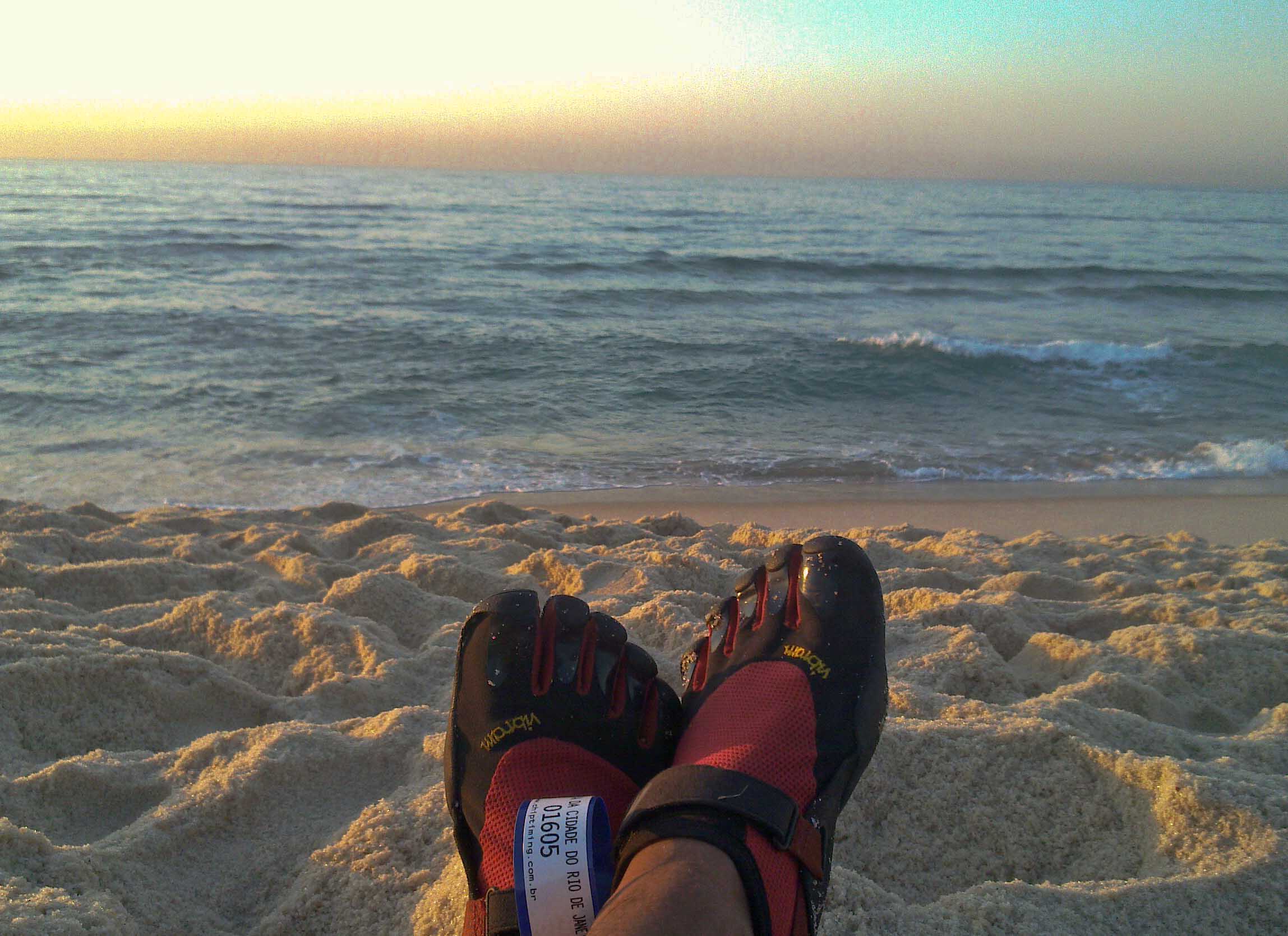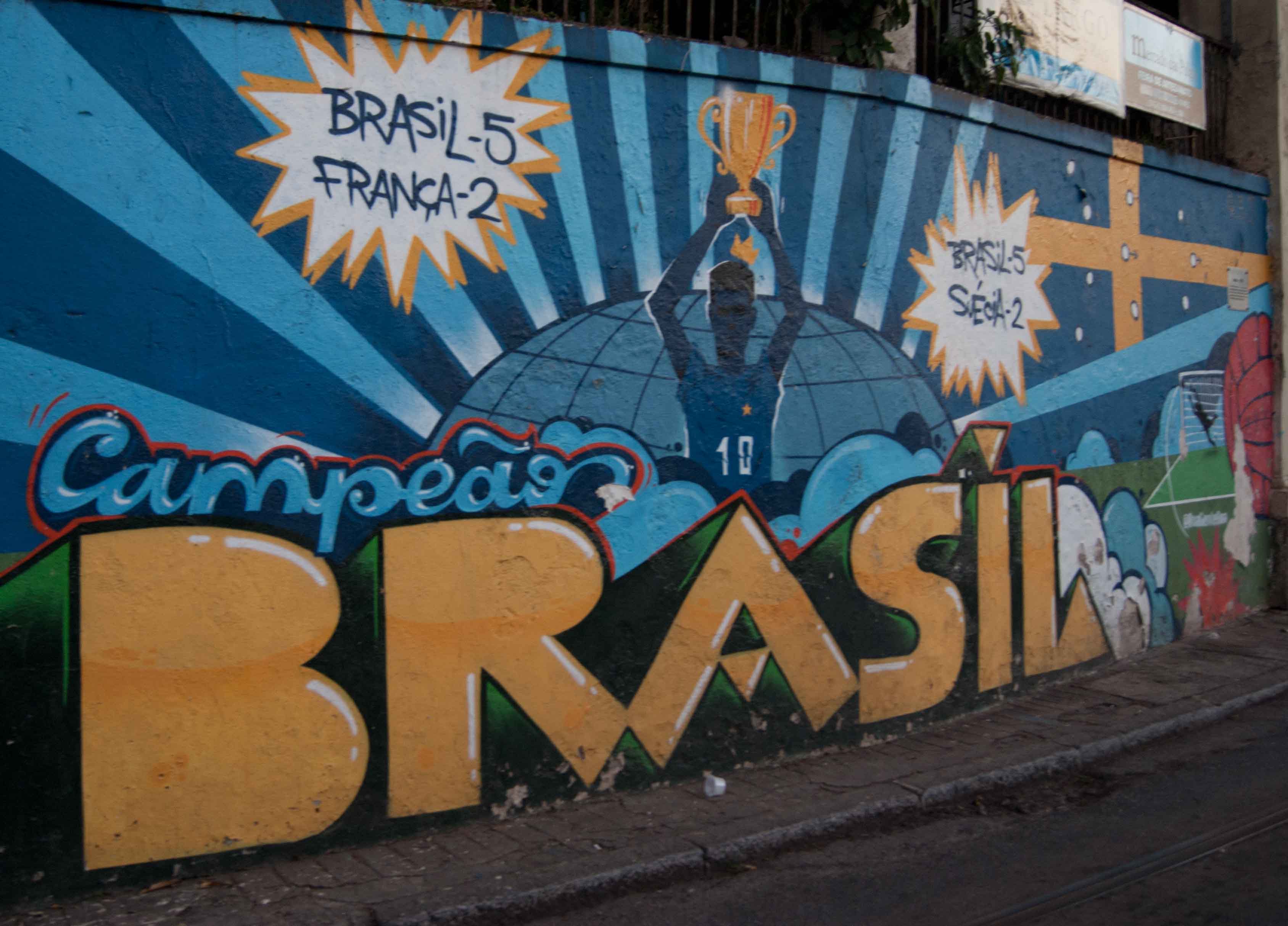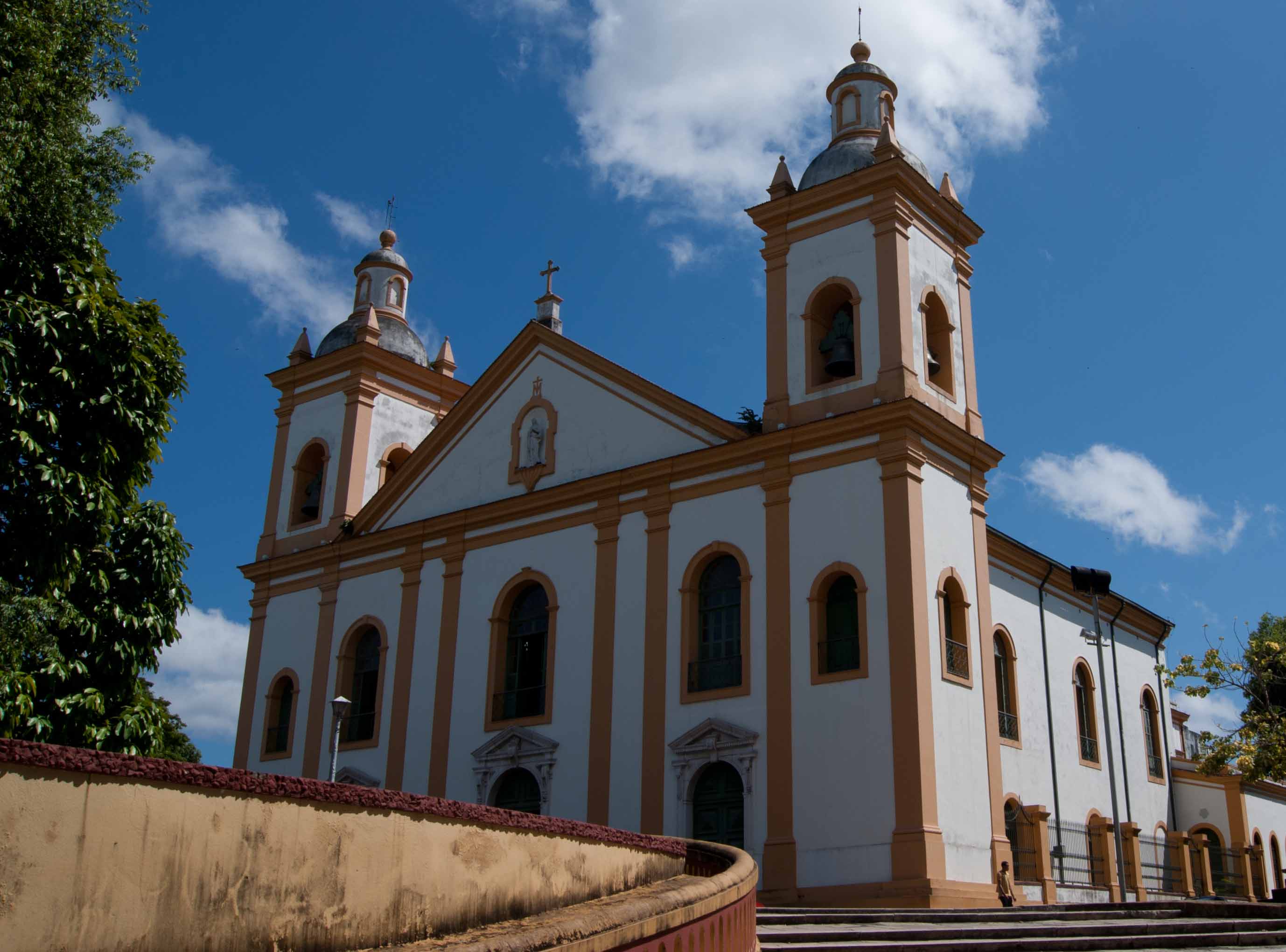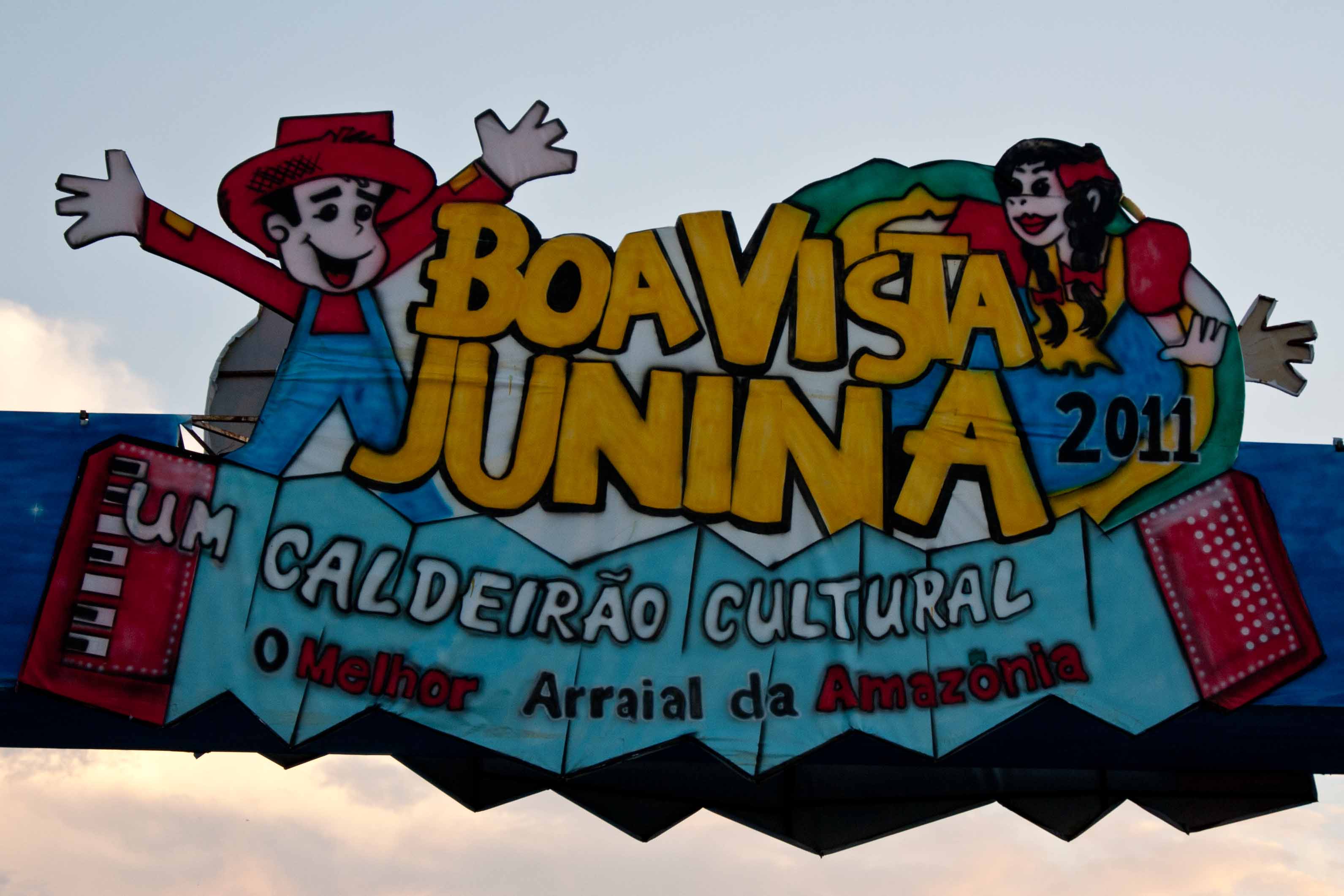 Picture this: backpack overflowing with hiking gear, bucket of food to last a week, hammock slung over your shoulder, heading into the World’s largest rainforest. Alone.
Picture this: backpack overflowing with hiking gear, bucket of food to last a week, hammock slung over your shoulder, heading into the World’s largest rainforest. Alone.
This isn’t a fantasy. It’s real and doable. And I’ve saved the best for the last – it would cost you less than USD 20 per day once you get to Brownsberg National Park, Suriname.
The trickiest bit of this trip is booking accommodation at the camp. The local STINASU office in Paramaribo allows you to book a shed where you can hang your own hammock for USD 10 per night. The shed also features a gas stove and a few multipurpose utensils allowing you to cook your own meals. For the lazy and more affluent campers, a restaurant (nothing fancy) serves meals near the park headquarters.
The Trails
Leo Val
Val in Dutch translates to waterfall in English. Not being the sharpest tool in the shed, it took a hike to Leo Val for me to figure this out. Leo Val is the most easily accessible waterfall. Although it’s reduced to a tiny trickle during summer, the view’s still worth the trek. More interesting though is the tiny cave right next to the falls. A few decades ago pork knockers, testing their luck, dug this cave. This would be gold mine was abandoned as soon as the forest was converted to a National Park and now plays home to a noisy bat population. Being no Bruce Wayne, I couldn’t work up the courage to walk into the bat cave but had to settle for a few pictures from the outside.
Mazaroni Top
Seated at the top of a tiny hill, this is one of the highest points in the park. A painless 15 mins walk will get you to this sunset spot. A shelter at the top makes this a good picnic spot. Depending on the number of people at the camp, you might have to share this spot with other happy campers.
Witti Creek
By far the most rewarding trail of the lot and also the most arduous trek of all. The creek at the end of the trail is a reward that makes the 2.5 hour struggle worthwhile. Flowing through this hidden creek is the best tasting water I’ve ever drunk. This is truly a tropical paradise hidden away in the middle of the forest. And if you get this far, you’ll have it all to yourself.
Kumbu Val
One of the hardest trails to follow, the path disappears once you get to a creek. No sign of any waterfall. After a mini ramble through the woods, I gave up on falls after getting lost.
Mazaroni Val
A 2 hour walk gets you to this cascading waterfall. Part of the trail uses a well-traveled road and is quite easy to follow. The going gets tough once you get off the road. As you approach the waterfall, the eerie forest silence gives way to the sound of flowing water. The beauty of this trail lies not in the magnificence of the waterfall but in how remote and inaccessible it is. One glimpse of the waterfall and you know that you’re one of the few people who have gotten this far.
Warning
- Trails are often partially wiped out by a huge tree falling across them and it is likely that you’ll stumble around for a while until you find the real trail. While this is a bit scary at times, it adds to the experience. Just be sensible and let the park rangers know which trail you plan to tackle each day.
- Attacks from Boa Constrictors and Anacondas are not uncommon. Carry a penknife in your pocket when you’re out on the trails. Despite my greatest efforts, neither of these celebrities made an appearance during my foray into the wild.
Street Music in Brazil
Music’s always in the air in Brazil…regardless of the time or the place..
 Paramaribo is the Capital of Suriname. Suriname, with a population of lesser than 500,000, isn’t a dominating presence on the World map. In other words, not many people know where Suriname is. To refresh your memory, it’s a tiny little country to the north of Brazil. Only 5% of this country is inhabited while a huge monster, commonly known as the Amazon, envelops the rest of it. Another strange fact about Surinam is that it’s one of the few Countries having more Surinamese people out of the Country (predominantly in Holland) than in the Country.
Paramaribo is the Capital of Suriname. Suriname, with a population of lesser than 500,000, isn’t a dominating presence on the World map. In other words, not many people know where Suriname is. To refresh your memory, it’s a tiny little country to the north of Brazil. Only 5% of this country is inhabited while a huge monster, commonly known as the Amazon, envelops the rest of it. Another strange fact about Surinam is that it’s one of the few Countries having more Surinamese people out of the Country (predominantly in Holland) than in the Country.
When you’re in South America, ordering nasi goreng (fried rice) from an Indonesian vendor, who (doesn’t speak a word of Bahasa and) replies in Dutch, you get a feeling that something went drastically wrong.
To understand Paramaribo, you’ll need to understand its history. Before you nod off at the mere mention of history, I’ll summarize in 4 sentences.
- The Dutch showed up and built fancy buildings
- They imported indentured laborers / slaves to cook (Indonesia), clean (Africa), and farm (India).
- The Dutch were then kicked out (we can’t be certain why)
- Somewhere along the line, the Chinese showed up and started selling Japanese cars and Chowmein. Bet you didn’t see that one coming.
The best way to explore this city would be to rent a bicycle and drift through the old streets of Paramaribo. The historical centre is beautiful and walking / cycling through it on a Sunday afternoon is a treat.
A few things you should check out are
The Cathedral
Reconstructed in the late 19th Century, it is an engineering marvel built entirely from wood. The immensity of this Cathedral doesn’t register until you walk in and you won’t be able to help but gape at the beautiful wooden paneling. That it has been standing for over a hundred years is a mystery.
Palm Garden
Supposedly part of the palace gardens at some stage, this beautiful garden consists of over a thousand palm trees planted on a 4 hectare piece of land in the middle of the city. Obviously popular with muggers and drug dealers come nightfall.
Water Front
Overlooking the water as the name suggests; the building dotting this street are the oldest in Paramaribo.
Sunday Flea Market
Some smartass decided that the best way to convert a regular market into the hottest event in town would be to add a “flea” to the name. Works like a charm. Tons of tourists show up to a display of fruits, vegetables, hardware, etc. Save your energy. Sit at home and drink Parbo Bier. Burrrp.
Fort Zeelandia
Once a symbol of the Dutch dominance over Surinam, this is now a restaurant that charges you 10 SRD to enter the fort, if you don’t eat there. Best way to subvert this tourist tax is to enter, check out the fort, glance at the menu and then make like a banana and split (or make like a tree and leave). I must concede that the view of the river is amazing and the prices are reasonable.
Imperial Palace
The Imperial Palace is lit up at night and stands as an imposing landmark bang in the middle of the historical centre of the city.
Once you’re done with this, give yourself a pat on the back (I did) and treat yourself to some wine and cheese to make your European-South American experience complete.
A direct flight from Georgetown to Paramaribo would get you across the border in an hour’s time. However, if
a) You’d like to save some money
b) You’ve got some time to kill
c) You’re looking for adventure
d) You need to get from Guyana to Suriname
e) All of the above
Then this is just what the doctor ordered.
In a nutshell, the trip involves a bus from Georgetown to Corriverton on the Guyana-Suriname border, a ferry across the river into Suriname and a bus from Nieuw Nickerie to Paramaribo.
|
Overland Trip |
Flight |
| Bus to Corriverton – USD 7.5 Accomodation – USD 12.5 Dinner – USD 3 Ferry – USD 10 Bus to Paramaribo – USD 20 Lunch – USD 5 Total – USD 58 |
Ticket to Paramaribo – USD 125 Departure tax – USD 25 Cab to airport – USD 5 Total – USD 155 |
This seemed straightforward at first glance. In retrospect, it might’ve been slightly more complicated than that. The journey begins at Starbroek with 5 people trying to grab your bags and physically throwing you into their minibus. A loud yell usually shows them that you mean business and are not a pushover. You’ve got 2 options at this stage. Option one involves forking out GYD 2500 for a seat on a cab going to Corriverton (yes – drivers usually pimp out their cabs and get 4 or more passengers to share a cab). But the cab’s for sissies. The real deal is riding the mini-bus to the border for GYD 1500. It’s cheap, entertaining and quick. The quickness might come at the expense of safety.
The ferry leaves for Suriname twice a day – 9am and 1pm. With a little reverse engineering you’ll realize that you need to take a bus to the border the night before if you intend to catch the 9am ferry and get to Paramaribo at a reasonable hour. Accommodation at Corriverton (border town in Guyana) is easily available with prices ranging from GYD 2500 to 6000. No need to book in advance. The cheap rooms are really minimal to the extent that toilet doors do not exist. The more luxurious rooms have air conditioners and cable TV!
The ferry timings are only indicative and the ferry will definitely not leave on time. Expect a 1-hour delay. The journey costs 2000 GYD for a 1 way ride and GYD 3000 for a return journey.
 When the ferry docks on either side, you’ll notice that around 10 people make a dash for the immigration line. I was content to scurry along and be the 11th person in the queue. However, the rest of the ferry took their time and much to my frustration, proceeded to push past me claiming to be with one of the 10 people in front of me. Having picked a fight with a few queue breakers (8 years in Singapore did that to me), I had the last laugh when I found out that they had to wait in the sweltering heat for all passengers to clear immigration before the buses departed for Paramaribo.
When the ferry docks on either side, you’ll notice that around 10 people make a dash for the immigration line. I was content to scurry along and be the 11th person in the queue. However, the rest of the ferry took their time and much to my frustration, proceeded to push past me claiming to be with one of the 10 people in front of me. Having picked a fight with a few queue breakers (8 years in Singapore did that to me), I had the last laugh when I found out that they had to wait in the sweltering heat for all passengers to clear immigration before the buses departed for Paramaribo.
 Once you get to Suriname, don’t expect a drastic change in the people or place. There’s a bit of Dutch and some iffy English splashed around on signboards but the English sounds the same as the Creolese in Guyana (although it should be called Rasta English in my opinion).
Once you get to Suriname, don’t expect a drastic change in the people or place. There’s a bit of Dutch and some iffy English splashed around on signboards but the English sounds the same as the Creolese in Guyana (although it should be called Rasta English in my opinion).
Look closely at the pictures below and its hard to tell which one’s Guyana and which one’s Suriname (one of them has a road – hint hint).
Seated at 2630m, Lalibela is a small town in Northern Ethiopia. It is considered a sacred place for Ethiopians and is a site of pilgrimage. Named after King Lalibela who ruled Ethiopia at the end of the 12th century, Lalibela translates to “person who loves honey”. Locals claim the King was given his name when bees surrounded his mother after he was born. Lalibela is a World Heritage Site and is famous the World over for its rock hewn Churches.
Getting there
Plane
 An hour’s flight away from Addis Ababa with Ethiopian Airlines monopolizing this route and all domestic flights within the country. It is not uncommon for passengers to be assigned to the jump seat next to the pilot if the flight has been over booked. Since Lalibela is located on a set of rolling hills, the airport is an hour’s drive away from the town. Most hotels offer a free shuttle service to and from the airport. The view along the road is amazing.
An hour’s flight away from Addis Ababa with Ethiopian Airlines monopolizing this route and all domestic flights within the country. It is not uncommon for passengers to be assigned to the jump seat next to the pilot if the flight has been over booked. Since Lalibela is located on a set of rolling hills, the airport is an hour’s drive away from the town. Most hotels offer a free shuttle service to and from the airport. The view along the road is amazing.
Bus
A 2 day bus ride from Addis Ababa with an overnight stop along the way gets you to Lalibela. Don’t expect 4-lane expressways.
See
Rock Hewn Churches
A 3-day pass will allow you to explore these ancient wonders though if you’re stretched for time, a day will probably suffice. Churches open between 8 am and 5:30 pm and are closed for lunch between 1 pm and 2 pm. Lunch hour equates to the caretaker locking up the Church and disappearing. In other words, don’t bust a gut trying to get back at 2pm.
Starting off at the museum, you get a glimpse of a few paintings, crowns, etc. It’s quite remarkable how no one seems to give two hoots about these ancient artifacts and they are just stashed away in a dilapidated glass-door cupboard.
Walking out of the museum you get introduced to the first Church and the largest one – Bet Medhane Alem (Saviour of the World). Feast your eyes on the largest rock hewn Church in the World. Photography might be a trickier task. The huge ugly UNESCO scaffolding makes it impossible to get a decent shot. It’s quite amazing how this massive monolith was carved out of sheer stone in the 12th Century.
Within his lifetime, King Lalibela not only completed this Church but built 10 other similar structures segregated into 3 sections. Scholars estimate that 40,000 labourers would be required to complete the construction pf all Churches within Lalibela’s lifetime. This has created a rift in the academic circles where one group claims that these Churches were built over several centuries while the other group claims Lalibela built them all. The locals claim that the angels built the Churches.
 The most remarkable of all these structures is the last Church and definitely the most famous one. An imposing Church stands right in the middle of a small mountain. Bete Giyorgis was built for Saint George, the patron saint of Ethiopia and this iconic Church has remained unfazed by the wind or rain for over 900 years.
The most remarkable of all these structures is the last Church and definitely the most famous one. An imposing Church stands right in the middle of a small mountain. Bete Giyorgis was built for Saint George, the patron saint of Ethiopia and this iconic Church has remained unfazed by the wind or rain for over 900 years.
A long, dark, narrow underground passage between 2 Churches in the South-Western group of Churches depicts the ‘Way to Heaven’ and represents the path that man has to follow in order to get to heaven. Stumbling through this passage without light and without the end in sight leaves you convinced that the path to Heaven is definitely not for the faint hearted (or the claustrophobic).
Eat
Seven Olives Hotel
 Set right in the heart of Lalibela and walking distance from the rock-hewn Churches, this restaurant provides a perfect way to cool your heels while waiting for the Churches to re-open. The roof of the hotel is thatched and consists of intricate concentric colorful circles. You would not get a stronger feel of Ethiopia anywhere else. The hotel also boasts of a curio store outside. The rooms at this hotel are unimpressive.
Set right in the heart of Lalibela and walking distance from the rock-hewn Churches, this restaurant provides a perfect way to cool your heels while waiting for the Churches to re-open. The roof of the hotel is thatched and consists of intricate concentric colorful circles. You would not get a stronger feel of Ethiopia anywhere else. The hotel also boasts of a curio store outside. The rooms at this hotel are unimpressive.
Lal Hotel
Reasonable food available here though there’s nothing to write home about. They do have traditional music and dance after 7 pm which is the highlight of the evening. Ethiopian dancers are renowned for their intense shoulder movements and watching this brought a new sense of admiration for this inimitable dance form. Apart from watching s coffee ceremony, getting a glimpse of the traditional Ethiopian dance is a must to get a taste of Ethiopian culture.
John Cafeteria
Tiny restaurant right in the middle of Lalibela. Excellent, cheap coffee available here if you can condition yourself to ignore the dirt, flies and mud.
Sleep
Although most hotels do have a website and email, hotels don’t support online bookings and definitely aren’t on the ball when it comes to replyin g to emails. All hotels have a booth at the airport allowing you to choose a hotel on arrival. The price of all hotels includes a free shuttle to and from the airport. This is your chance to mess with uncertainty. Just rock up and wing it. You’ll survive.
Lal Hotel
Situated right in the middle of Lalibela, this hotel provides clean and decent accommodation. Priced at 30 USD per night, the hotel can’t be classified under the budget category although the rooms do have a budget feel to it. Bathrooms do not have hot water. The hotel staff were very friendly and helped organize transport (a 25 seat bus for 3 of us) and a guide to take us around Lalibela. Bargaining skills as always come in handy.
Mountain View Hotel
The view from this hotel is fabulous. Pretty isolated from the rest of Lalibela, the glass walls of the hotel give you a breath taking view of the valley below and the horizon marked by greenish brown rolling hills. Definitely the place to stay if you can afford it.
Running 42km and 195 metres (or 26 miles and 385 yards) is no walk in the park. And having voluntarily signed up for and completed this act of physical torture, I can vouch for this. The name ‘marathon’ originates from the tale of a Greek messenger running from the battle of Marathon to Athens and declaring to the Greek people that they had won the battle before collapsing and dying. Recent advancements in technology now mean that running a marathon doesn’t necessarily result in death. Phew…
The Rio Drama (as it unfolded)

Running a marathon along some of the World’s most famous beaches couldn’t be too hard right?
The first 15 km passed in a haze. I had set myself a time of 5 minutes per km and stuck to this time for the first 15 km without any problems. The weather was a perfect 20 degrees without being too humid and the sun had just risen. I was tempted to increase my speed at this point but decided to go with my pre-marathon internet research and stick to the pace.
Having hit the halfway mark at my planned pace (1 hour 45 minutes), I was just about giving myself a silent pat on the back when I hit the first hill and tunnel. The gradual ascent seemed never-ending but the cool tunnel at the end of the hill helped me claw back the minutes I’d lost on the way up. The end of the tunnel marked the beginning of the stretch of Rio’s world famous beaches.
São Conrado gave way to Leblon, Ipanema and finally Copacabana. The crowds heading to the beach stopped by and offered occasional hi-fives to the exhausted runners. This was between the 25 km and 35 km point. Although I wasn’t tired, I’d already been running for 2 hours by then and my resolve was being tested. Spotting a few backpacker friends on the road with signs reading “Vai Jason” (Go Jason – in Portuguese) did a lot to keep me going.
Kilometres 35 to 42 were probably the most intense and difficult physical activity I have ever attempted. It was pure torture. I tried my best to keep my mind occupied and off the run but maintaining my pace was impossible. After having slowed down to an easy jog to grab a bottle of electrolyte, I never recovered. The brass band on Copacabana and laser show in the tunnel offered momentary respite but didn’t do much to mask the pain. The final 200m sprint didn’t seem like it was worth the effort until I noticed a 70 year old man shuffle past me. That snapped a chord and I broke into a dash for the finish.
The result: 3 hours 39 minutes and 58 seconds.
Success.
What I learnt from my first marathon
1. Train like your life depends on it
Nothing will prepare you better for a marathon than a solid 18-week training schedule. Make your schedule and then stick with it. To prepare for my 42 km run, I ran 640 km in training over a 3-month period, slowly building up my mileage every week. I used Hal Higdeon’s training calendar and downloaded it to my calendar using “Your Training Calendar.” A lot of blood and sweat goes into the marathon before you’ve run past the start line. And for good reason. 18 weeks down the line, all you’ll have to do is relax and let your training take over.
2. Don’t experiment on race-day
As you work your way through your training, you’ll pick up a few tricks and learn more about your body and your running style. Maybe sleeveless t-shirts get you sun burnt and chocolate gels spur you on. These tiny details will help you finish your marathon. Come race-day, you should know exactly when you’ll hit the halfway mark and at which km you should reach for your first gel sachet. I used a larger water bottle on race day (1L on race-day vs. 650 mL in training) and the extra weight of this bottle was on my mind throughout the entire race. Moral of the story: don’t experiment on race day.
3. Have fun
Running is fun. If you treat this marathon as a chore, it’ll end up being horrible. Remember there’s nothing as liberating as running. I kept repeating the following 3 words throughout my marathon and it made life a lot easier
Breath… Smile… Run…
As you being to enjoy this experience, focus not on the finish but on the journey. This way things get a lot easier. You notice the blue sky, the cheering crowds and all of a sudden, your legs get a lot lighter and it feels like you’re flying.
Rio is undoubtedly one of the most beautiful cities in the world. It’s not hard to see why…
1. Beaches

A perfect beach would have white sand and blue water line with beautiful mountains and a rainforest for a backdrop. Now how about all of these for a city beach? Rio’s pride and joy – Copacabana and Ipanema figure in any list of the world’s most famous or beautiful beaches. Who would need to go on holiday if this was home!
2. Sports Central

If you’re a sports fan, then Rio is heaven. With the turn of the millennium, every important sporting event has made a beeline for Rio. The Olympics looks set to take the world by storm. Rio also plays host to one of the most beautiful marathons around – all along the coast with Christ the Redemeer spurring you on.
Did I mention the Soccer World Cup?? Enough said.
3. Jesus Dude

Cristo, Christ the Redeemer, Christo Redentor, Jesus dude – call him what you want, he’s impossible to ignore in Rio and stands guard over the city. The statue up close is monstrously big and is as tall as a 13 storey building; an engineering marvel and a work of art. If you manage to drag your eyes (and cameras) away from Jesus, the gallery from the top of Corcovado offers a panoramic view of Cidade Maravilhosa (the magnificent city).
4. Pao de Acucar (Sugar Loaf Mountain)

It would seem logical that if you’ve seen one viewpoint of the city, you’ve seen them all.
Wrong.
The sugar loaf mountain, perched at the edge of the city offers spectacular views of the city on one side and the coast on the other. A pleasant hike through the park is an alternative to paying an arm and a leg for the cable car. Sunset on the sugar loaf mountain is spectacular and being able to see Jesus watch over the city is priceless. And of course a beer at the top does help enhance the overall experience.
5. Handgliding / Paragliding

Think flying off a cliff. Think Rio.
Running off a ramp 600m above sea level, cruising over the world’s largest city-forest, descending over the Atlantic Ocean and finally landing on the beach is a wild ride for any adrenalin junkie (and that’s an understatement). With the wind in your hair and the sun on your shoulders this is probably the best way to literally get a bird’s eye view of the beaches, mountains, rainforest, favelas and the city. Priced at a steep 200 USD per flight (5-10 minutes), this is a once in a lifetime opportunity (at least for the financially challenged) to fly. And taste real freedom.
6. A Walk Through Time

Something that people might forget to mention about Rio is how old it is. Beautiful buildings, remnants of Portuguese architecture are splashed across the city. They stand in start contrast to the modern day skyscrapers that threaten to take over. A walk through the centre of the city drives home the fact that Rio wasn’t built in a day (couldn’t resist) and was actually founded in the 16th Century.
7. Santa Teresa

This Bohemian neighborhood in Rio is home to budding artists and can be reached by tram from the city. The 20-minute tram ride to Santa Teresa is a treat by itself. At half a dollar (US), it’s also the cheapest tourist attraction in the city. Santa Teresa sits on a hill and offers picturesque views of the sun setting over the city. Cobblestone streets, graffiti all over the walls and tiny hole in the wall shops selling artwork makes walking through the streets of Santa Teresa quite an experience. It feels like you’ve entered a new world far removed from the hustle and bustle of the city below.
8. Music

In Brazil, music is always in the air and here Rio is no exception. The bar and club scene here is huge with the music played ranging from alternate rock to samba to the World famous Bossa Nova that incidentally originated in Rio. The Lapa Street parties draw thousands and the Sunday Night Favela Funk party is a different animal altogether. The World’s largest music festival – Rock in Rio returns for another edition in 2011, this time headlined by RHCP.
Video with Brazil street music coming your way in a couple of days. I’ve uploaded a tiny snippet for now.
9. Suco Bars

As with any big city, most people are always rushing to get somewhere, but in Brazil there’s always time to stop at a suco (juice) bar. You can choose from an endless list of fruits many of which the rest of the world are blissfully unaware of. Either that or I need to spend some time on my Portuguese. Suco bars are at every street corner and grow on you after a while. In my opinion every city could do with a healthy dose of suco bars.
10. Carnival

Come February and it’s carnival season. Perhaps the most famous carnival in the world; samba schools begin rehearsals for the carnival in September. I visited in July but was fortunate enough to stumble upon the filming of a promotion for Carnival 2012.
 Located practically in the middle of nowhere (the Amazon), Manaus faded from the spotlight after the rubber boom ended in the early 20th Century. The majestic Teatro Amazonas still stands in the middle of the city reminding everyone of the glorious yesteryears. This city still plays home to 2 million people or 50% of the people who live in the Amazon.
Located practically in the middle of nowhere (the Amazon), Manaus faded from the spotlight after the rubber boom ended in the early 20th Century. The majestic Teatro Amazonas still stands in the middle of the city reminding everyone of the glorious yesteryears. This city still plays home to 2 million people or 50% of the people who live in the Amazon.
A walk through the streets on a Sunday shows that the city is still full of life, color and beauty.
With Guyana to the East and Venezuela to the North, Boa Vista serves as Brazil’s quaint little border town (Bonfim is a village and is disqualified). Practically cut off from the rest of Brazil by the vast wilderness known as the Amazon, Boa Vista hasn’t let this hinder its development in any way. The affluence of Brazil is clearly visible on a road trip across the border from Lethem in Guyana to Boa Vista in Brazil. Mud roads turn into paved roads (and sometimes beautiful cobble-stoned streets). Standalone warehouses turn into impressive buildings. Shops turn into supermarkets. You get the point.
Despite bordering an English speaking and a Spanish speaking Country, a person who speaks anything but Portuguese is as elusive as a Goan teetotaler. Imagine the plight (and fright) of a linguistically challenged backpacker who naively rocks up without packing a word of Portuguese. Revisiting the memory of this experience is still terrifying..!! However, Brazilians are warm people with a very outgoing culture. They brushed aside all language barriers and I successfully hitchhiked across the Brazil-Guyana border into Boa Vista. I was practically treated like family by the unusual bunch of Environmentalist Evangelists who gave me a ride in their hippy Volkswagon bus.
 From a tourist perspective, there’s nothing much to do in Boa Vista. Taking a boat ride along the river to watch the sunset seems to be the only option. I got lucky and stumbled upon the annual carnival and had the privilege of watching traditional dancers compete in their colorful costumes and also managed to explore a variety of Brazilian cuisines on offer at the carnival stalls.
From a tourist perspective, there’s nothing much to do in Boa Vista. Taking a boat ride along the river to watch the sunset seems to be the only option. I got lucky and stumbled upon the annual carnival and had the privilege of watching traditional dancers compete in their colorful costumes and also managed to explore a variety of Brazilian cuisines on offer at the carnival stalls.
Music filled the air, the smell of barbequed meats filled my nostrils and caiperinhas filled my stomach (I’m a vegetarian) – this seems to be the common theme for most of my adventures in Brazil.
Garota de Ipanema
Bossa Concert at a bar in Ipanema – seemed fitting that they threw in their version of this legendary song.
Tons of Brazilian music to upload once I get hold of my computer and a decent internet connection. Watch this space..
